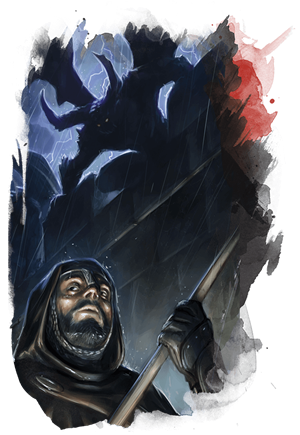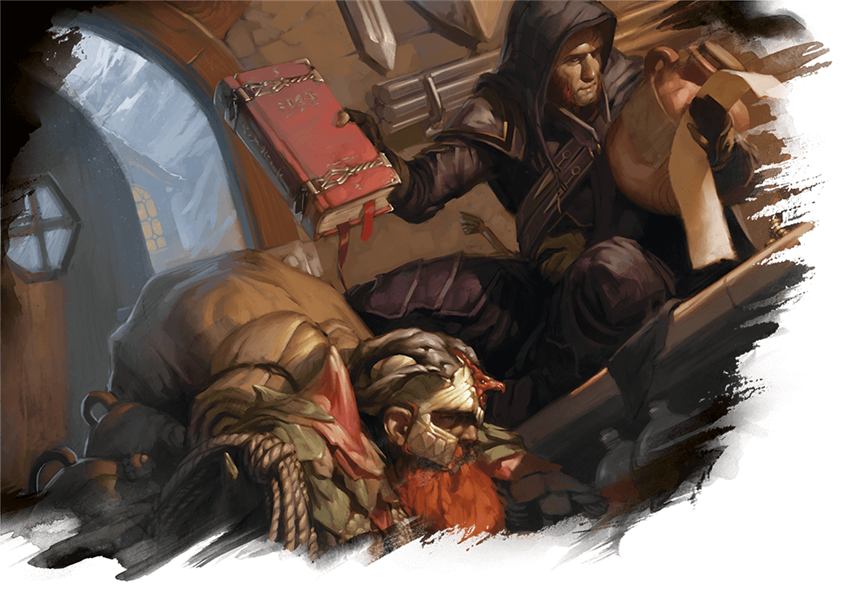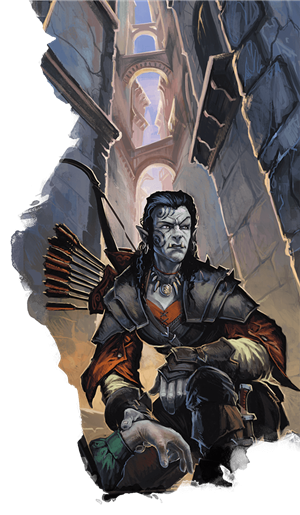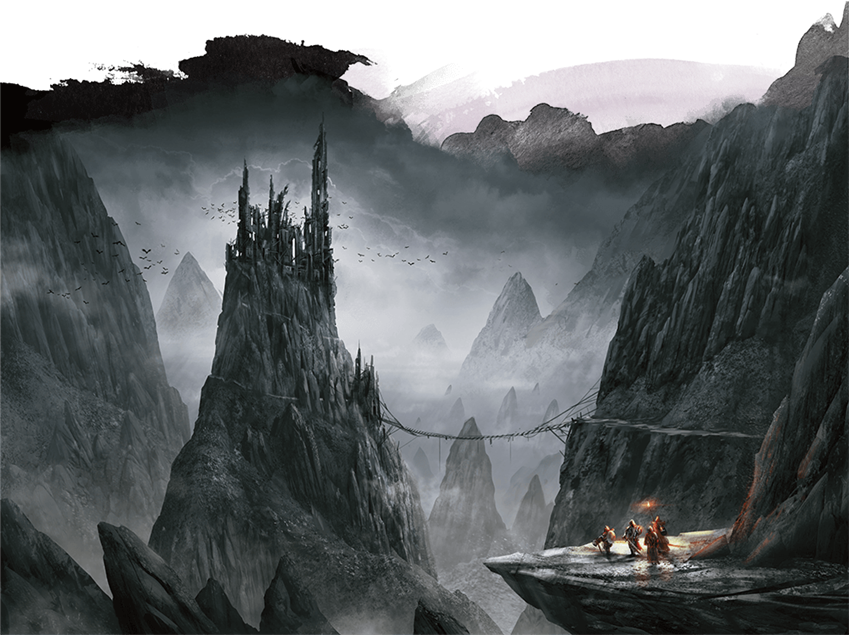 When I was young and foolish, I’d brag about not needing outlines for my writing projects. Outlines were something that other people needed. My “brilliance” could carry me forward without any need for pesky planning!
When I was young and foolish, I’d brag about not needing outlines for my writing projects. Outlines were something that other people needed. My “brilliance” could carry me forward without any need for pesky planning!
Years later, I’m now older (and still foolish)—but I’m less foolish about the power and utility of outlines and planning. The lesson I’ve learned over the years, slowly and often painfully, is that although I wasn’t actively creating outlines before I started writing, I was passively outlining as I wrote, usually at the expense of many drafts of a project—and far too many wasted words. I thought I was saving time by not planning ahead, by not creating an outline, but I actually was wasting so much time haphazardly and inefficiently doing the work of outlining without even realizing I was doing an outline.
Creating D&D adventures is no different from other writing projects in that aspect: an outline is invaluable. In some ways, outlining for D&D adventures is more valuable than for other types of writing, because adventures can look very different from one another based on several design factors. Thinking about those factors early in the process, and then incorporating them into an outline at the start of the project, allows you to process your needs more quickly, increasing your efficiency and opening up your creative brain earlier in the process, rather than focusing on logistics later. In essence, when you know how your adventure needs to function, you can more easily imagine the form.
Form, Let Me Introduce Function
Architect Louis Sullivan famously created the axiom: “form follows function.” Taken at its most basic level, this principle states that the form something takes is inherently informed by that thing’s purpose. Sullivan’s protégé, Frank Lloyd Wright, broadened that philosophy to explain the idea more clearly: “form and function are one.”
High-falutin’ ideas aside, common sense dictates that adventures written for yourself to DM for only your home group in 6 hours will be different than one to be played in two hours at a convention and run by DMs you know, which will itself be designed differently than a 12-hour adventure that you are writing for publication in a hardcover book. Ponder the function, then you are ready to start outlining the form.
As you ponder function, though, think not only about the length, but about the scope of the adventure as well. Does the adventure take place in one general location, a couple, or several? If more than one, what is the distance between the encounter locations? Will travel be involved? Will characters need to provide their own means of travel, and will that travel be dangerous? Or if the whole adventure takes place in just one location, like a dungeon, is this going to be a simple tale of breaking down the door and defeating the evil warlord, or is there going to be a more involved storyline? The scope of the adventure likely influences the length of the adventure, or vice versa. Prepare to adjust the length to be manageable within the scope, or prepare to change the scope to match the length.
Scope is also beholden to the level for which the adventure is designed. High-level, epic adventures that happen all in one place are often problematic, because high-level characters have the tools to perform tasks that low-level characters don’t. Stone dungeon walls rarely impede epic-level characters who have access to spells like stone shape or swords that can cleave a dragon in twain. Where high-level characters are concerned, the adventure’s setting itself often needs to be challenge or pose some sort of threat in order to make the game feel as epic as it should. On the other hand, low-level characters are fragile beings, even in the face of a few marauding goblins, so the environment shouldn’t be a threat as well.

The Usual Suspects
Adventure design has changed with time and evolving game rules, but certain bits of content are included in most adventures. Those standard sections of an adventure, regardless of heading’s exact phrasing, are useful as you put together your outline, focusing your design path:
Introduction
An introduction is generally a very brief description of what the adventure contains, and what parameters the adventure was designed under. The introduction lets the reader know information about the length and scope, where the adventure is set, what the tone of the adventure might be, what character levels the adventure supports, and any other relevant information a DM might want to know in a cursory read of the adventure.
For the adventure I plan to write over the course of this series of articles, this is my working introduction. It can obviously change if my design takes me in a different direction, but I can use it as my guiding star as I start my design:
“Currently Untitled” is a fifth edition D&D adventure for characters of levels 5-7, optimized for level 6. The adventure is meant to be playable in 4 hours, and takes place in a subtropical wilderness. The adventure contains horror elements, with an emphasis on exploration and problem solving.
Adventure Background
Background sections provide the DM with the most basic and important information about what precipitated the conflict that the characters are about to get involved in. Generally, the larger the scope of the adventure, the more extensive the background must be. However, it’s important to keep the background section as short and concise as possible. Background information that’s essential to the DM’s understanding of the forward-moving plot is wonderful. Background information the PCs might learn as they wind their way through the story may be relevant enough to include as well. Anything more, regardless of how creative and powerful it might be, risks drowning the DM in unnecessary details.
It's important to understand that the adventure background may change—and likely will change—as you design the adventure. Better ideas often bubble up as you design, so your outline needn’t polish this background information to a fine sheen. If you know where you want your story to start, that’s good enough for now.
Adventure Synopsis
 The adventure synopsis section provides a high-level overview of what might happen during the adventure. Even if the adventure is non-linear, it’s still important to let the DM know the expected flow of the encounters in an adventure. If there are important connectors between scenes and encounters, make them clear. There is no need to highlight every encounter in detail; just give the DM the basics of what might happen, and in what order.
The adventure synopsis section provides a high-level overview of what might happen during the adventure. Even if the adventure is non-linear, it’s still important to let the DM know the expected flow of the encounters in an adventure. If there are important connectors between scenes and encounters, make them clear. There is no need to highlight every encounter in detail; just give the DM the basics of what might happen, and in what order.
For the purpose of outlining, don’t bother with this section yet. As you jot down your ideas for scenes and encounters (see below), the adventure synopsis takes shape on its own. After you have designed the encounters, you can come back and write the synopsis. Waiting to write the synopsis until the end also helps you ensure that the adventure flow makes sense post-design, as you take one more pass through the encounters you have written.
Cast of Characters
If you are writing an adventure with more than a couple NPCs, it is wise to include a cast of characters. This gives DMs a way to quickly digest the NPCs they need to bring to life for their players. A pronunciation guide is helpful for those hard-to-read names. As with the adventure synopsis, this section doesn’t need to be included in your outline, although adding the NPCs to it as you go is useful, giving you an easy reference as you write.
Encounters/Parts/Scenes/Acts
Whatever you want to call them, these comprise the beating heart of your adventure. Many designers have a tendency, understandably so, to want to fully design here rather than outline. Perhaps, if you don’t have many parameters that you are designing for, you can do that. However, if you do have strictures on your play time and adventure scope, outlining first is important.
In the case of the adventure we’re going to create together, let’s set some guidelines. We need it to be playable in 4 hours, because we’re going to design it for a standard convention slot. (Designing adventures for organized play campaigns also brings this limitation to your design.) This means I need to be very deliberate in the number of encounters, where they take place, and how much time each should take to resolve at the table. (If you are writing an adventure for a home group with no time limit, you might not need to do this, but it is good practice to set some limits anyway to focus your design. You can always remove the limits if necessary.)
We’ll discuss the design of encounters—and the use of the three pillars of play in D&D—in later articles, so for now I’ll just leave you with this: use your outlining time to get the general flow of your encounters, and stay attuned not only to what happens during the adventure, but how it happens. You probably want to vary the types of encounters to make sure that you don’t leave the DM trying to run the same type of encounter (combat, roleplaying, exploration, puzzles, etc.) over and over and over again.
To put this even more succinctly: where are the characters at the start of the adventure, where should they be at the end of the adventure, and what are some of the steps they might take on their journey from beginning to end. In our case, where we need to fill 4 hours. We can assume about 5-8 encounters within the understanding that some encounters might be skipped, or some encounters might be fairly short roleplaying or exploration encounters.
Handouts, Maps, and Appendices
As you envision DMs running your adventure, consider what might be helpful or fun if it was represented visually in a handout for the players. Puzzles that have moving pieces or that are highly detailed can benefit from a handout. More importantly, providing handouts of letters or journals or other things the characters find can deepen the player’s experience, and also take some of the workload off the DM.
Do any of your encounters contain elements better represented in a map rather than strictly described in the text? Most DMs and players appreciate maps, especially in areas with dungeons or other complex encounter areas.
Any information that could be of use to the DM, but is not meant to be seen by the players, can be included in an appendix. Deciphered answer keys for puzzles can help DMs who might otherwise not understand a solution described in text. If you use a lot of complicated and important NPCs in the adventure, an appendix with their information on a single page can be a game-saver for the DM.

Outlines for Large or Complex Works
What I have been describing is how I outline relatively simple adventures that can be run in a session or two. But what about outlines for longer or more complex adventures that might have many chapters, or art asset components that must be described, created, reviewed, and then figured into the layout, or a specific page count that you must design to?
If you are working on this level, it is best to employ a spreadsheet to track your design needs on a page-by-page basis. I’ll talk more about these concepts in an article toward the end of this series, and I’ll call upon expertise from project managers, producers, and layout experts for more relevant advice.
When is an Outline Complete?
When I’ve talked to people in person or online about adventure design outlines, I always get the question: “when do I know my outline is done?” My best answer to that is, “your outline is never done, but at some point, you have to start writing.” I personally stop working in outline form when I have answered the basic design questions of the adventure to the best of my ability, and I could start writing any part of the adventure and feel comfortable doing so. And no matter where I start writing, I proceed with the understanding that as I write that part, it will likely change something elsewhere in my outline. That means I am constantly going back to the outline and updating something that has changed elsewhere. This way, I don’t forget about the changes I have made, and I can keep the design tighter than if I was writing without the outline.
In much of the adventure design I do, I find myself writing in a way that I call “front to back to front.” Using my outline, I start with the first encounter or scene and write forward for as long as I can keep my momentum. If I hit a point where I don’t quite know what do to next, even with the outline in front of me, because something feels different, then I start “writing backward.” I look at what I wrote already, and I make changes based on where I ended up. Note that this is not an edit; this is reading and rewriting to make sure that where I have been matches where I am heading. Normally before I even get all the way back to the front, I am seeing where I should go next, so I continue.
If I am lucky, I get all the way to the end with a first draft before I lose momentum, so my “back to front” rewrite of the adventure can literally take me from the end all the way back to the beginning. If I have gotten off track in terms of theme or story beats, I can see the flow and figure out where that happened. If my transitions between scenes or encounters are weak and could be strengthened, I can see that.
But always in the background, ready to help me out and remind me of what I wanted to do when I started this process, is that outline. It’s the touchstone that can help focus a brain that wants to play in the playground of infinite possibility. And if the outline needs to change because one of the swings in the playground is so much better than the swing I’m currently on, that’s OK too. But I must remember to change the outline before changing the adventure, because I need my guide.
Next Time
In the next article, we’ll look at creating plot hooks and opening scenes for adventures. How many plot hooks are too many? What is the best way to start an adventure? How can you leverage parts of D&D to make the best opening possible? What are some common adventure design pitfalls with regards to opening scenes?
Have you ever outlined an adventure, or even run an adventure entirely from an outline? Let us know in the comments.
 Shawn Merwin's professional design, development, and editing work in D&D has spanned 20 years and over 4 million words of content, ranging from third to fifth edition. His most recent credits include the Acquisitions Incorporated book, Baldur’s Gate: Descent into Avernus, and Storm Lord’s Wrath. He is also the Resource Manager for the D&D Adventurers League’s Eberron: Oracle of War campaign. Shawn hosts a weekly D&D podcast called Down with D&D, and he holds an MFA in Creative Writing from Vermont College of Fine Arts. You can follow his ramblings and musing on Twitter at @shawnmerwin.
Shawn Merwin's professional design, development, and editing work in D&D has spanned 20 years and over 4 million words of content, ranging from third to fifth edition. His most recent credits include the Acquisitions Incorporated book, Baldur’s Gate: Descent into Avernus, and Storm Lord’s Wrath. He is also the Resource Manager for the D&D Adventurers League’s Eberron: Oracle of War campaign. Shawn hosts a weekly D&D podcast called Down with D&D, and he holds an MFA in Creative Writing from Vermont College of Fine Arts. You can follow his ramblings and musing on Twitter at @shawnmerwin.
Want to read more of this series? Click on the "Let's Design an Adventure!" tag to see the full series.








-
View User Profile
-
Send Message
Posted Oct 11, 2019This is fantastic. Exactly the kind of thing I've been looking for. Thanks!
-
View User Profile
-
Send Message
Posted Oct 11, 2019Great article! Looking forward to the next one.
-
View User Profile
-
Send Message
Posted Oct 12, 2019Can't wait for the next article! As a homebrew DM this is especially helpful. My first homebrew campaign became a train wreck at about lvl 5. We just finished up Dragon Heist and now I'm homebrewing again since my players aren't dungeon crawlers and they all have interesting backstories I want to explore. I have some rough ideas for each of them but I NEED an outline SOON or else
-
View User Profile
-
Send Message
Posted Oct 12, 2019Excuse me, I was not able to get into the first article.
-
View User Profile
-
Send Message
Posted Oct 13, 2019Thank you and well written. Excited for the next.
-
View User Profile
-
Send Message
Posted Oct 13, 2019I don't see why so many people have a problem with this article. A veteran DM is sharing his tips on how to write, prepare, and run an adventure. Sure, I'm a more improvisational DM, and so are many others, but this is really helping.
-
View User Profile
-
Send Message
Posted Oct 13, 2019Very helpful article. I'm looking forward to this rest of this series!
-
View User Profile
-
Send Message
Posted Oct 14, 2019In my admittedly very limited experience I never actually stop writing the outline but rather the outline morphs into the adventure. I'll start with the story beats I want to hit, and encounter that I want the players to get into, an NPC and build around it. Expounding on each section as the adding more and more detail until it becomes less cumbrous to turn my bullet point into pros. In this way i have run an adventure via outline when players inevitably veer of the track i anticipated an all i have written down for a section of the city is that it exists.
-
View User Profile
-
Send Message
Posted Oct 17, 2019I love these articles, so thanks for the work. Although I have listened to the podcast, having this down in text is really helpful. I plan to use these articles as readings for my students because their final exams will be creating an adventure for another group in the class to run!
-
View User Profile
-
Send Message
Posted Oct 17, 2019Thank you very much. Such a good read and great article. Hungering for more!
-
View User Profile
-
Send Message
Posted Oct 23, 2019This is a great point, but I would suggest that outlining is critical to any kind of adventure. Even if your adventure is open wilderness or a sprawling dungeon with nothing linear about it, or is a loose series of events that can happen in any order based on character actions, an outline will help you write a better adventure. Players who love a good sandbox experience still want to believe that the world has connections and rational behavior (you killed the orcs, now the goblins are spreading across the land). Outlining helps you think about how the product should be shaped, regardless of its format.
I highly recommend taking a look at different types of products that have open design. We can check out adventures for lines such as Spycraft (free) and Eclipse Phase, where you may have events that take place, but a lot of open play in between. Or there are situations with "ingredients" in them, and the party describes what to do with those. We can also take a look at the Night's Black Agents adventures, which tend to have a very open design around a "Conspyramid" - a pyramid of bosses and vampire/boss servants. The party can tackle scenes and work their way through the conspiracy in many different ways, but there is a structure there to guide the DM.
And, that may be the biggest benefit of an outline - seeing how well the DMs will fare. An outline helps you get a feel for what the final product will look like to the audience. Audiences are never one type of person. They are a myriad of perspectives with different preferences. That outline lets you see the shape the adventure will take and how it can better serve the audience.
-
View User Profile
-
Send Message
Posted Nov 9, 2019Great article, but can you advise who the artist is or are?
-
View User Profile
-
Send Message
Posted Nov 15, 2019Really loving this series. Are you going to cover sourcing art and maps etc for those amongst us that aren't gifted with artistic ability?
-
View User Profile
-
Send Message
Posted Oct 18, 2020An example outline would be a great thing to include in an article about designing outlines
-
View User Profile
-
Send Message
Posted Jul 12, 2021Just came across this article and am currently utilizing and testing the techniques suggested with an outline. I've never considered an outline with my homebrew campaign but it's really helping me focus my thoughts.
An outline being "the touchstone that can help focus a brain that wants to play in the playground of infinite possibility" is precisely what can often overwhelm me and snatch away my motivation and inspiration. I love playing and running dnd but hate when this happens!
Thanks for the article. Looking forward to reading the rest of this series.